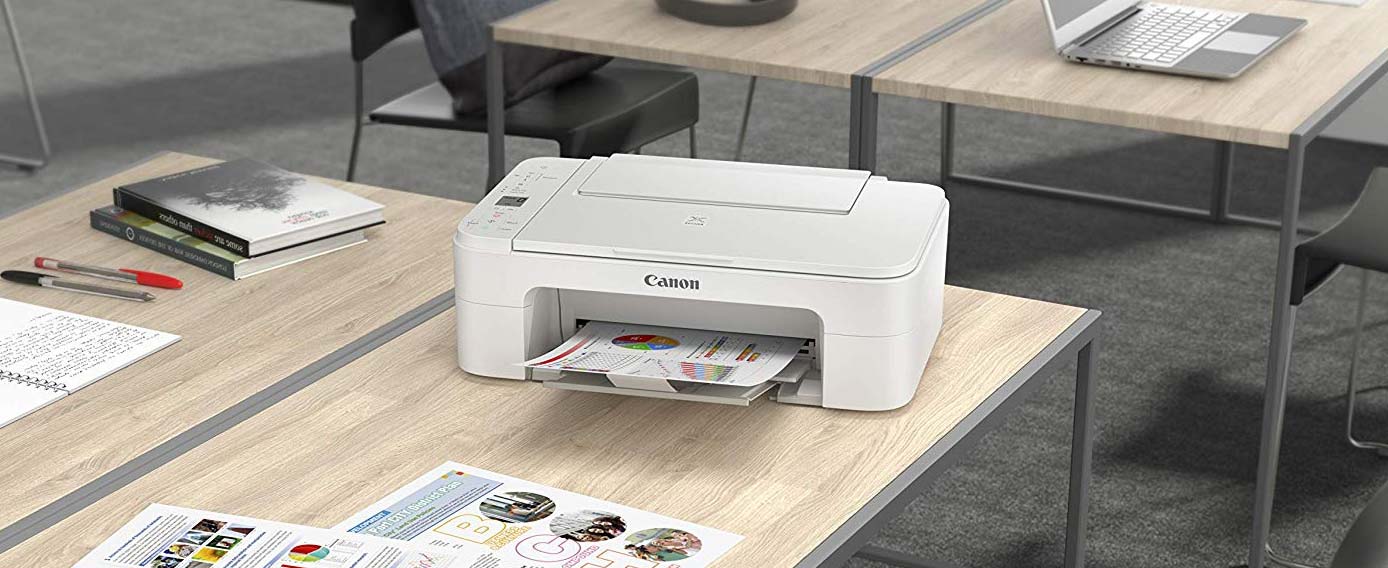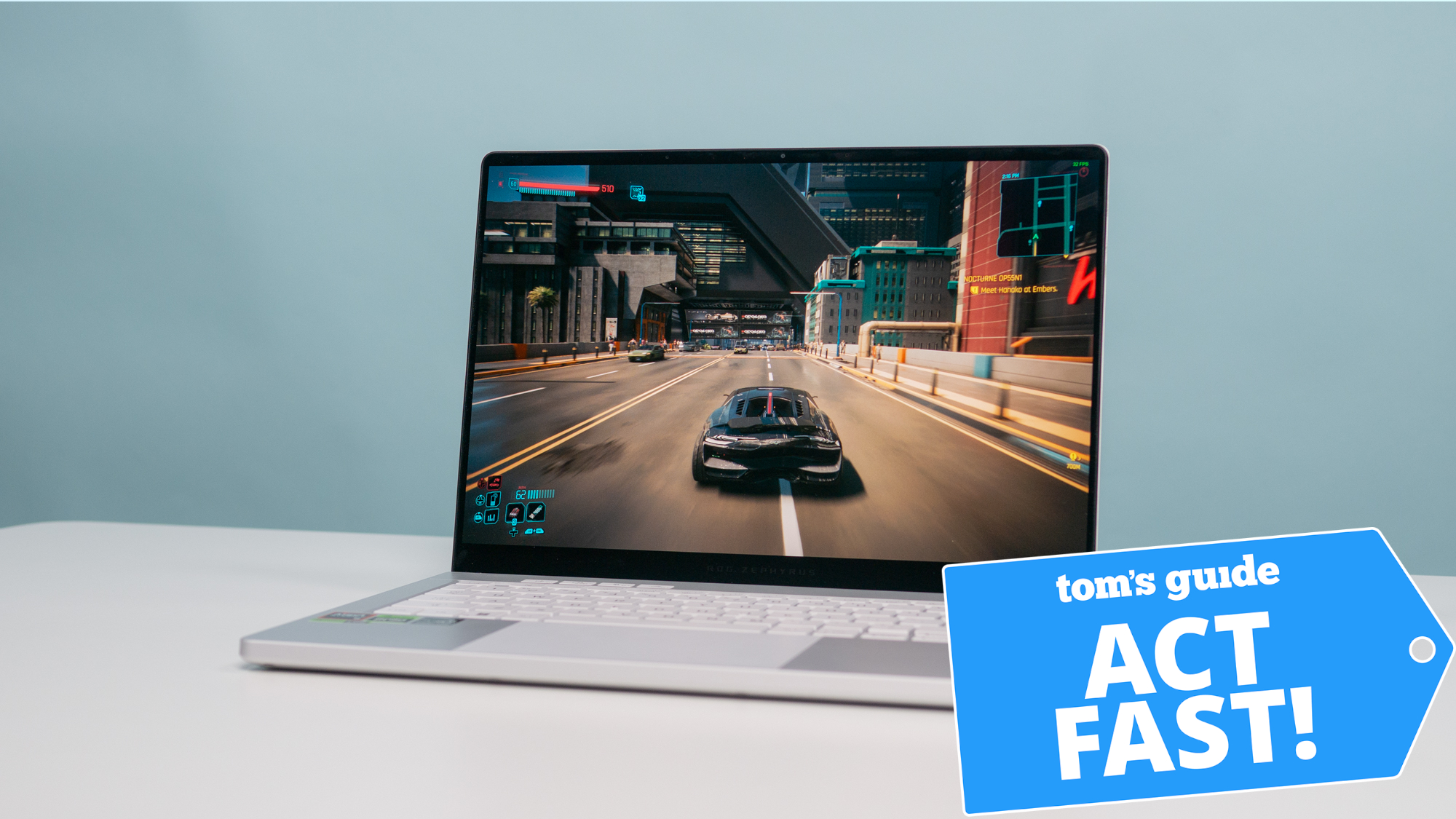Tom's Guide Verdict
The Pixma TS3320's middling performance and above-average ink costs are not deal-breakers, but its error-prone performance makes it hard to recommend.
Pros
- +
Low price
- +
Fast scanning in black-and-white
- +
High quality photo prints
- +
High scan quality
Cons
- -
Slow print speeds
- -
High ink costs
- -
Slow at color copying
- -
Recurring printing errors in testing
Why you can trust Tom's Guide
The Canon Pixma TS3320 is a basic, no-frills, inkjet all-in-one printer. Priced at just $39, this entry-level model offers printing, scanning and copying. The TS3320 keeps operation simple, using just two ink cartridges (black and tri-color) instead of individual cartridges. You won't find any of the fancy extras you'll see on the best printers. For example, there isn't a second input tray for photo paper, an automatic document feeder (ADF) for multipage copying, nor a duplexer for making two-sided prints.
You can connect to the TS3320 wirelessly, or via the USB port. The printer is compatible with mobile devices by using the company's Android/iOS app, although I was unable to get an iPhone 7 to work (more on that later).
Design
The Pixma TS3320's control panel is at the top of the device's body, to the left of the scanning bed. There are a few physical buttons: Two of them initiate a wireless connection to either a network or smartphone, respectively. Two additional buttons bring up – on the small liquid-crystal-display (LCD) screen – either the settings menu or status information. The small, 1.5-inch monochrome screen does not have a light, and can be difficult to read in a dimly lit space. Other than the simple Copy function, you'll most likely want to operate the TS3320 from a PC, and not standalone.
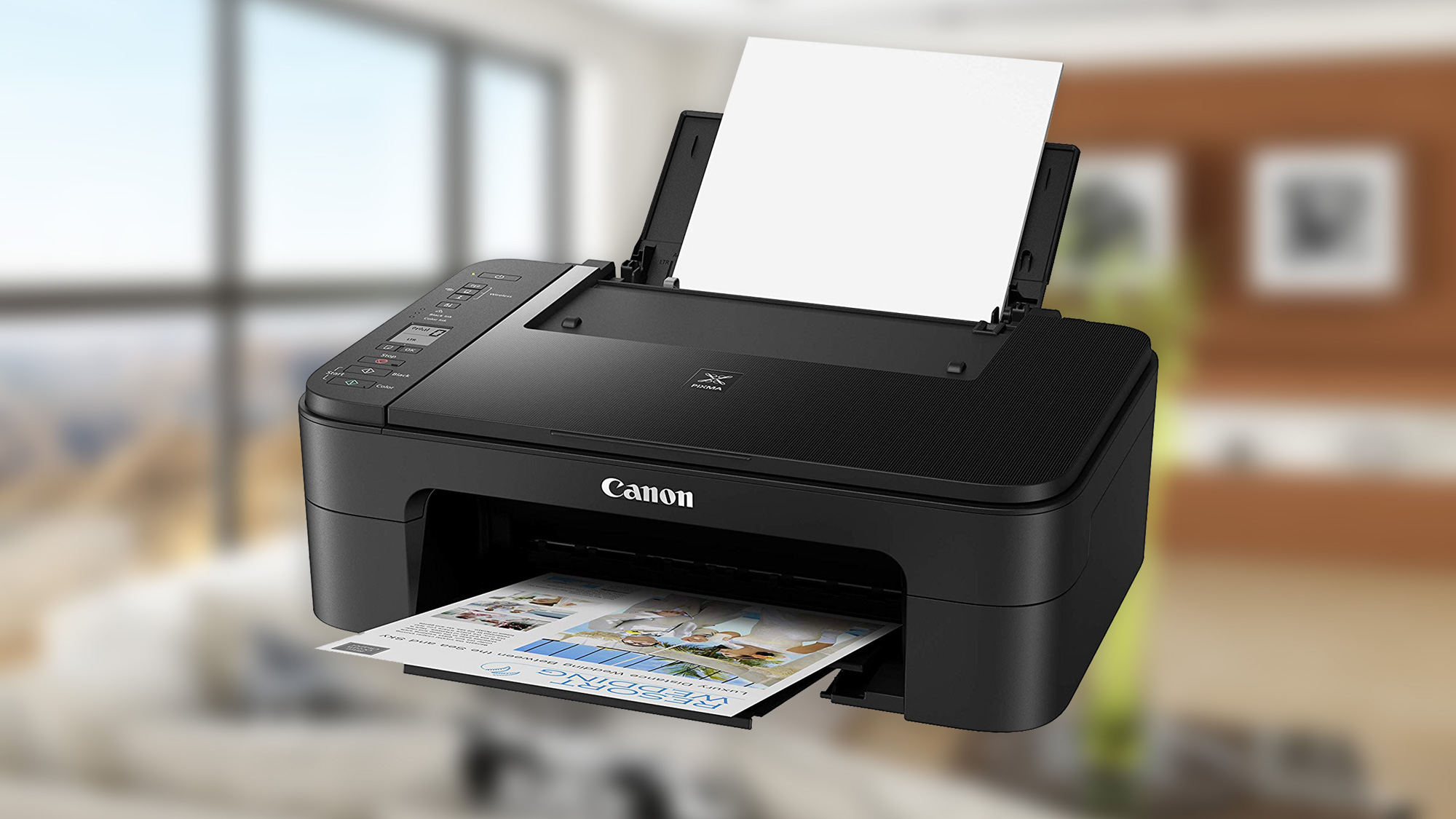
Paper is loaded into the 60-sheet paper tray at the back of the unit. The tray also can hold up to 20 sheets of 4-by-6-inch photo paper or 10 sheets of 5-by-7-inch photo paper. You will have to use glossy photo paper; the printer does not support matte paper, though it does work with the more exotic magnetic and restickable varieties.
The output tray pulls out from the front of the printer, beneath a large recess in the body. To swap ink cartridges, you reach inside this cavity and fold down a cover to reveal the ink cartridge bay.
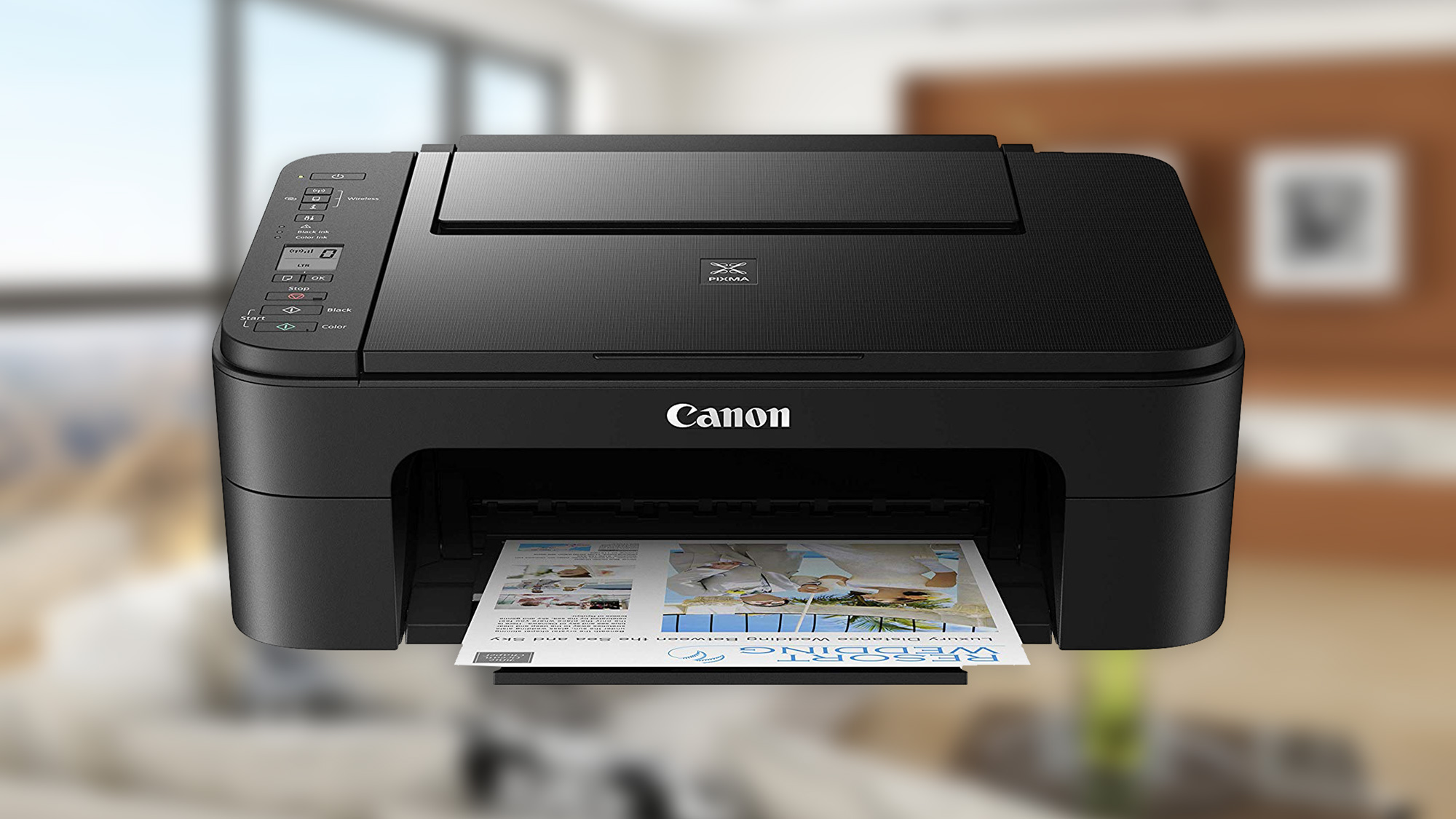
The TS3320 is neither compact nor extremely large for an inkjet all-in-one. With the paper trays retracted, it measures 17.2 inches wide by 12.5 inches deep; it's 5.8 inches tall. With the trays extended, the TS3320 becomes 21.8 inches deep and 8.4 inches tall. Lacking a duplexer and ADF, this unit is quite lightweight, at eight-and-a-half pounds.
This model comes in black, white or red.
Print speed
The TS3320 printed our five-page text document in 43.7 seconds (or 6.9 pages per minute [ppm]). This was significantly slower than the category average of 33.5 seconds, or 9 ppm. The device was extremely slow at printing in color, turning in one of the slowest times to date on our six-page PDF of mixed text and color graphics: The TS3320 took 4 minutes (1.5 ppm) to print the document. Comparable models printed the same PDF at nearly double that speed, taking just 2 minutes and 7 seconds on average, or 2.8 ppm.
The TS3320 was unable to complete our photo printing speed test, for which we make a full-page print onto letter-size photo paper (more on that later). So, I made 4-by-6-inch photo prints instead, for comparison.
The TS3320 made 4-by-6-inch glossy prints in 2 minutes and 1 second. By comparison, most models we've tested were faster, though some were slower. Among speedier models were the Canon Pixma MG3620, which printed a 4-by-6 in just 43 seconds, and the HP Tango X, at 1 minute and 15 seconds. However, we've seen slower printing, such as the now-discontinued Epson XP-420, which took nearly 3 minutes to complete the same task.
Copy and scan speed
Color copying was slow. The TS3320 is the second-slowest inkjet model at color copying we've tested in this category. At 47 seconds, it was far behind the average of 27.8 seconds. Only the HP Tango X was slower, at 1 minute and 11 seconds. The Editor's Choice Canon Pixma TS9120 made a color copy in just 17.3 seconds in our tests—almost three times faster than the TS3320.
Black-and-white copying was more within range, but still somewhat slow at 19.2 seconds, compared to the category average of 15.8 seconds.
The TS3320 made a 600 dots-per-inch (dpi) color scan to JPEG format at roughly average speed. At 1 minute and 1.7 seconds, it came in under the average of 1 minute and 7.7 seconds. By comparison, the Editor's Choice Canon TS9120 made the same scan in just 37.8 seconds.
The printer scanned quickly in black-and-white to PDF format at 300 dpi. It captured a scan in just 7.5 seconds, compared to the average of 11 seconds; the TS9120 was similarly fast, at 7.7 seconds.
Print quality
Text prints were not extremely sharp, but adequate. On close examination, letterforms in text documents had soft edges, with errant ink spray around them. Letterforms in our PDF test document looked sharper, by comparison.
Graphics printed onto plain paper looked attractive, with sharp details and smooth mid-tone transitions. Banding, however, was clearly visible across all of our graphics prints.
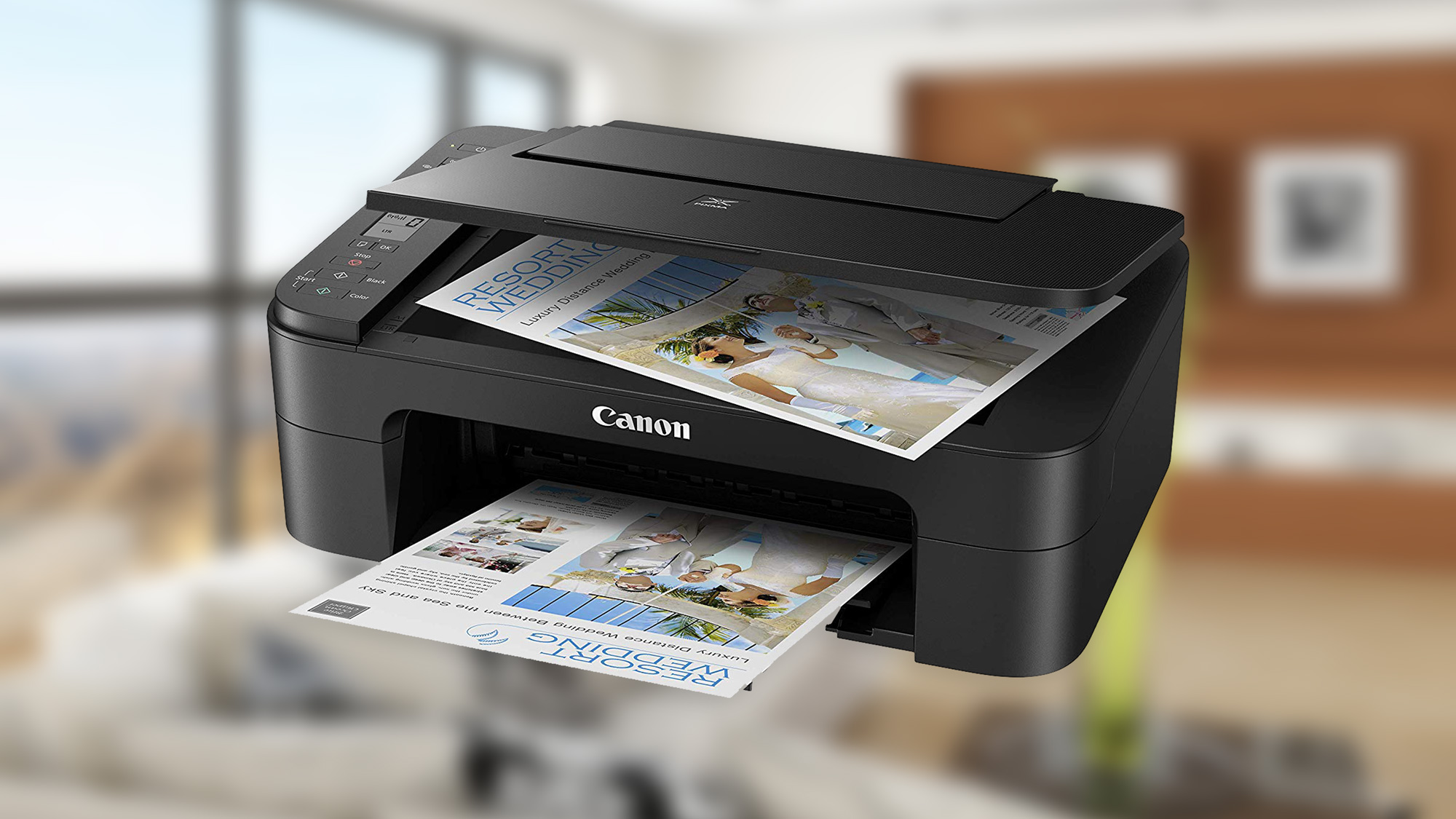
Because the TS3320 would not print onto letter-size glossy paper, we were left to judge photo quality on 5-by-7 inch and 4-by-6-inch glossy prints. These prints looked very attractive, with sharp details and natural-looking color saturation. Although the device does not support matte paper, I was pleased with the look of the print I made on to matte paper using the plain paper setting.
Copy quality was similar to print quality: Text looked a little rough around the edges, and graphics looked very attractive — but mild banding was distracting on some prints. The banding was more pronounced on photographs or artwork with depth, versus illustrations with a flat appearance. The same was true in color and black and white.
Scans of photos in JPEG format and documents in PDF format looked very true to the originals – sharp overall. Color photos were reproduced with accurate exposure and well-saturated colors, although some fine details in shadow areas got lost. Black-and-white scans of graphics also lost some details from the original, in dark areas.
Ink cost and yield
The TS3320 uses two ink cartridges: a pigment black and a tri-color cartridge of dye-based inks. Three tiers of ink cartridges are available, but the least expensive of them comes with a very high cost per page. Using the PG-243 black and CL-244 color cartridges, costs per page are 16 cents for text and 37 cents for graphics. Ouch.
Bumping up to the PG-245 black cartridge brings the text page cost to 10 cents — but that's still way north of the average of 7.2 cents for a standard cartridge. Using the CL-246 color cartridge, costs per color page are 22.8 cents, versus the average of 19.8 cents using standard cartridges.
Using XL high-yield cartridges, the TS3320 has costs per page of 8.7 cents for text and 18.7 cents for color. The averages for competing models using high-yield cartridges is 5.6 cents (text) and 14.4 cents (color). If you do a lot of printing, those ink costs will add up.
Using the basic cartridges, printing a 4-by-6-inch photo costs a whopping 67.5 cents (if you buy them individually). Using the CL-246 color and PG-245 cartridges, a 4-by-6 requires 43 cents' worth of ink. The XL cartridges print a 4-by-6 for 34.3 cents.
Combo packs could lower those costs per page a little — in theory. The PG-243 (black) and CL-244 cost a total of $36.98 individually, and a two-pack costs $26.99. However, the high costs per page of these 100-page-yield cartridges already makes them difficult to recommend.
Disappointingly, a two-pack of the higher-capacity cartridges will not lower printing costs. The PG-245 black (180 pages) cartridge and the CL-246 XL color cartridge (300 pages) cost $54.99 when bought with 50 sheets of 4-by-6-inch photo paper. But buying them individually costs only $47.98. The Canon online store does not make clear if the pack includes standard photo paper or Photo Paper Plus Glossy II. But either way, it's not a deal. A 100-pack of 4-by-6-inch Photo Paper Plus Glossy II costs $10.99. The same pack of regular photo paper costs $5.99. The math doesn't add up.
Setup and software
The first step in setting up the TS3320 is simple. You remove a handful of tape and packaging material, and install the ink cartridges. Setting up a USB connection with a Windows 10 laptop, I was directed to download the software online at ij.start.canon.
On my first attempt to print, however, I got an error message, because one cartridge was not fully seated. The ink cartridge bay is quite deep inside the body, behind a fold-down door. Reaching inside and installing the cartridges is a little cumbersome:You must press the cartridge in (forward) and angle it up slightly.
As mentioned in the print speed section, the TS3320 could not make a full-page photo print onto letter-size glossy paper (nor smaller sizes, such as 4-by-6 and 5-by-7). Trying to print onto letter-size photo paper caused a conflict with another print setting — but it did not specify which one — and caused the print driver to switch the paper size setting to 4-by-6. Changing other settings such as Shrink to Fit, Borderless and Glossy Paper type did not resolve the issue.
The company sent us a second test model, but the same test was still unsuccessful. I tried making a 4-by-6-inch photo print onto letter-size glossy paper, but received an error message saying that the media type and paper size were not set correctly.
It is worth noting, for photo-printing enthusiasts, that the TS3320 does not support printing onto matte paper.
To set up the device with an iPhone 7, I scanned the QR code in the printed manual, which took me to the iOS app download (there is also a QR code on a sticker on the printer body). Scanning that took me to a page in Safari and initiated the setup process. However, the Canon app said that the printer could not be found. Holding down the mobile-connect button on the printer was also unsuccessful.
Oddly, the TS3320 did show up in my WiFi network list of printers in iOS. But the connection failed each time I entered my network password. The printer's LCD said “E36”, which I had to look up online; the definition simply said that the wireless connection failed. A second test unit also failed to show up in the Canon app. And, although the printer showed up in iOS, I was still unable to print to it from the iPhone 7.
The TS3320 supports Mopria on Android devices, although we did not test this. The specifications say that the device also supports Amazon Alexa, Google Assistant–and IFTTT (If This Then That) integration.
The device started up slowly, taking roughly 12.8 seconds before printhead-priming sounds wound down and the power light stopped blinking. Making a black-and-white copy right out of the gate took a little longer than usual, which isn't surprising. Instead of making the copy in the usual 19.2 seconds, the first copy took roughly 25.5 seconds to make.
Bottom line
The TS3320 keeps it simple, foregoing many features aimed at photo-printing enthusiasts and busy home offices. The low up-front price is enticing, considering that you get high-quality photo prints and scans. But, text and plain-paper graphics printing was middle-of-the-road.
Mediocre performance makes the TS3320 far from versatile. The device scans quickly in black-and-white, but is otherwise slow across the board, and suited for only occasional duty. The problems we encountered with two test units suggest that this all-in-one might be too error-prone for comfort. Neither test unit would print a photo onto letter-size glossy paper. And, neither test unit would work with an iPhone 7, even when the phone was able to detect it. Standalone operation is a little irksome, relying on a tiny, 1.5-inch segment LCD with no light to help you read it.
Ink costs are handily above the average with the standard and XL cartridges. But, if you make the mistake of buying the lowest-capacity ink cartridges, costs per page are really high. You'd think a combo pack of cartridges and photo paper would save you money, but it won't.
All of these shortcomings make the TS3320 difficult to recommend. However, if the $39 price tag still entices you, it could work out in favor of your pocketbook. Compared to the $150 Editor’s Choice Canon Pixma TS9120, the TS3320 averages 2.1 cents more in ink costs per page. If you don’t print much, this may work out in your favor: To eat up the $111 difference in price, you’d have to print almost 5,300 pages.
Eric Butterfield is a freelance writer and musician from California. His work has appeared in PC World magazine, CNET, Taproot, and Alter Action — plus Tom's Guide, of course — while his music has appeared in more than 260 TV show episodes for major networks such as NBC, Hulu, BBC America, and more. You can check out his work on Spotify.
